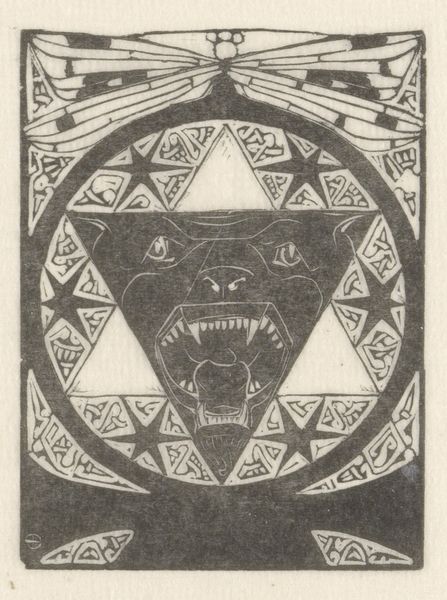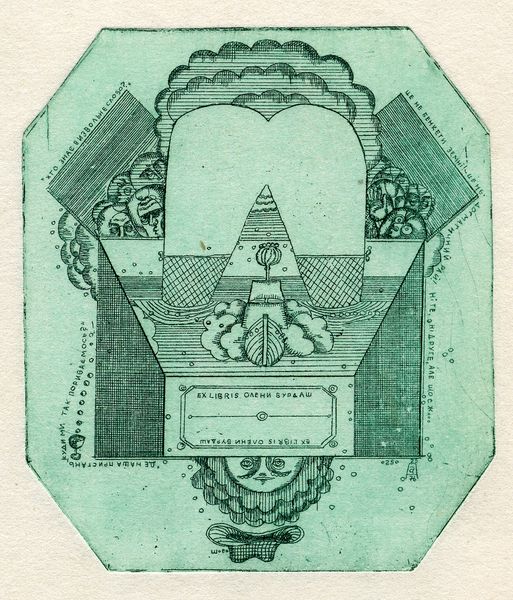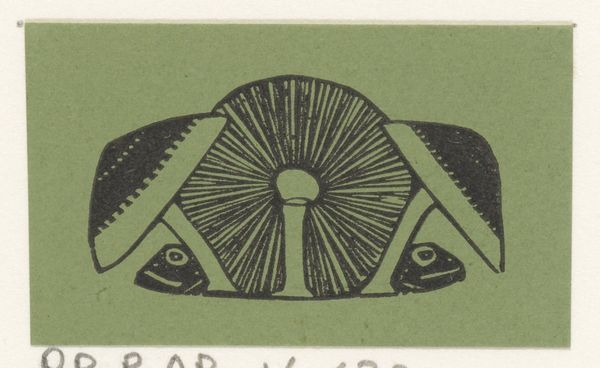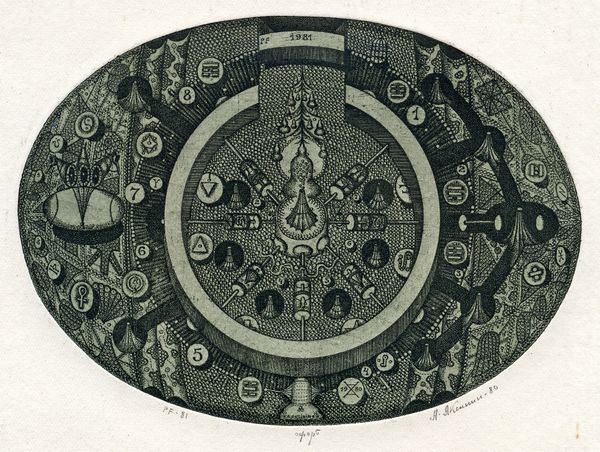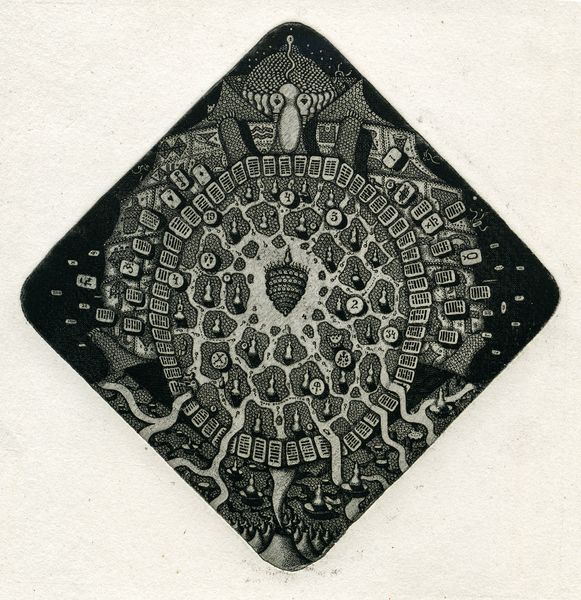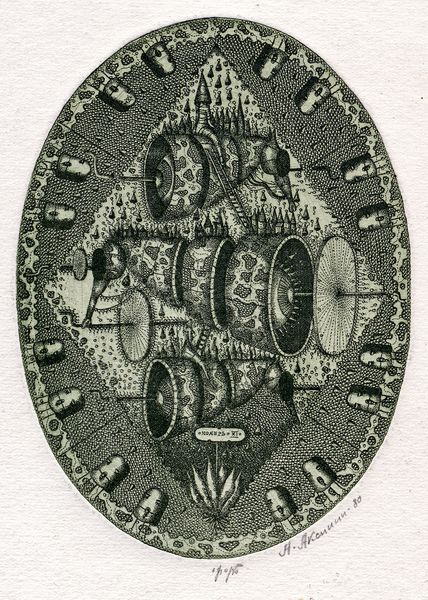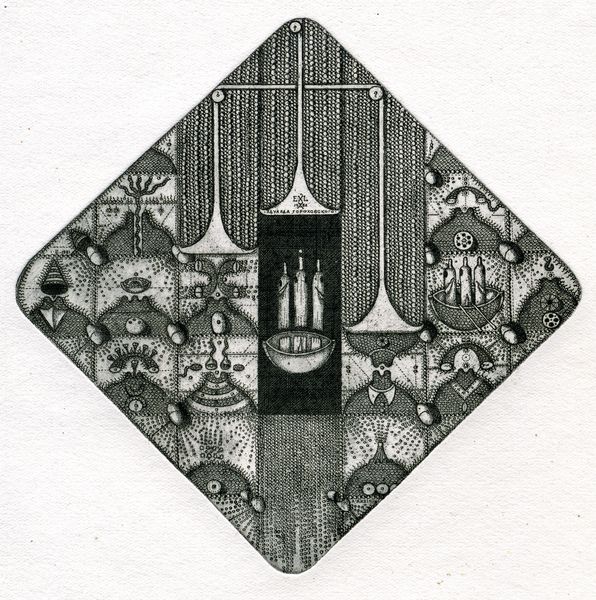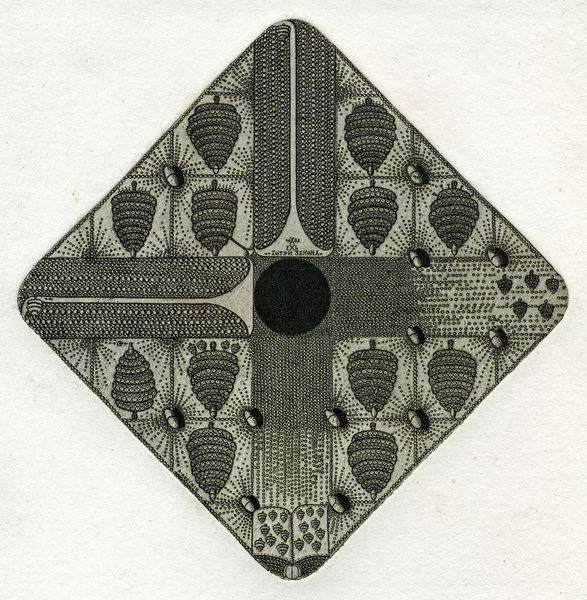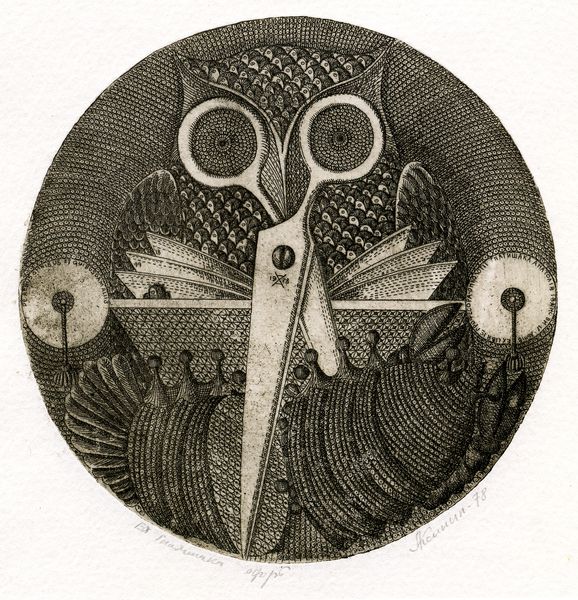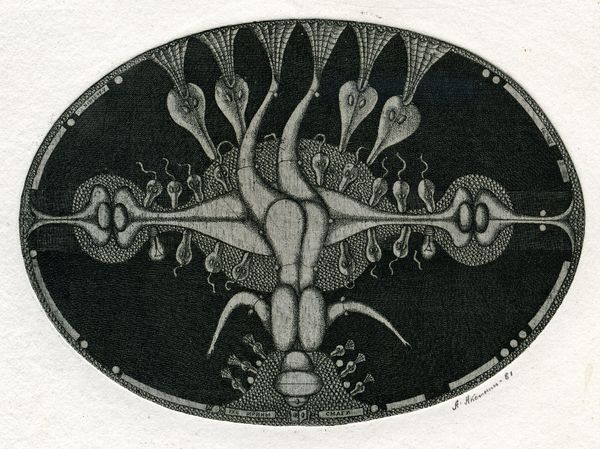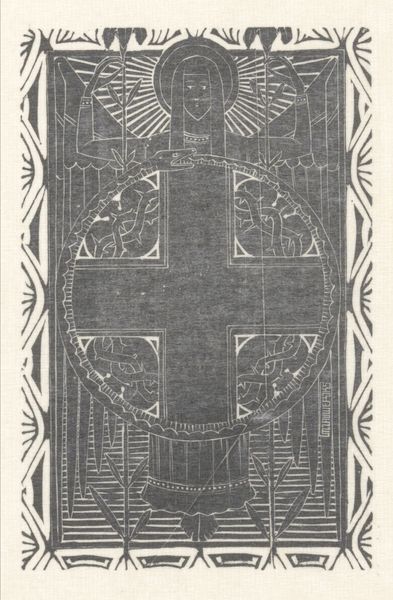
drawing, graphic-art, print, ink
#
drawing
#
graphic-art
#
quirky sketch
# print
#
pen sketch
#
pencil sketch
#
sketch book
#
personal sketchbook
#
ink
#
sketchwork
#
geometric
#
pen-ink sketch
#
pen work
#
sketchbook drawing
#
sketchbook art
Copyright: Oleksandr Aksinin,Fair Use
Curator: Here we have "Exlibris C.M." created in 1977 by Oleksandr Aksinin. It's an ink drawing, a print using graphic art techniques. Editor: It strikes me as incredibly detailed and slightly unsettling. There’s this pyramid shape filled with, well, what appears to be a complex wheel and some cryptic text. It feels like looking at a secret society's emblem. Curator: “Exlibris” refers to a bookplate, typically bearing the owner’s name. Aksinin was deeply embedded within Ukrainian intellectual circles, creating these intricate graphics, often containing symbolism related to literature and philosophy, to personalize someone's library. The image itself becomes a miniature statement. Editor: The choice of geometric forms and somewhat archaic font reinforces that sense of exclusive knowledge, a knowing nod. It evokes occult symbols, perhaps playing with the viewer's expectations of secrecy and hidden meaning, like codes to be deciphered. The lines feel like controlled chaos. Curator: Considering the Soviet context, this act of personalization through creating Exlibris served a unique cultural purpose. By claiming ownership over literature in such a visible, stylized manner, Ukrainian intelligentsia forged networks of cultural exchange and dissent, resisting centralized control through their own private archives. Editor: It's fascinating how this small image becomes an act of defiance! You start seeing the wheel not just as a mechanical element, but potentially as a "wheel of fortune," which symbolizes fate. It hints at navigating treacherous times while claiming intellectual autonomy. The pyramid feels reminiscent of the all-seeing eye. Curator: Absolutely. This bookplate serves as a subtle form of resistance through cultural means. It’s through careful analyses of these small forms of art and design, especially in oppressive regimes, where social history finds its expression. Editor: Makes you wonder about the books that this very image marked as owned! Thinking about its owner, this piece highlights identity, censorship, and resilience. It prompts us to critically examine ownership in a time when everything felt heavily controlled by the state. Curator: Exactly, it becomes an assertion of cultural heritage amidst restrictions, prompting us to reconsider what images meant under strict governmentality. Editor: An intriguing and politically potent little object! Curator: Indeed, a perfect encapsulation of power dynamics distilled in ink.
Comments
No comments
Be the first to comment and join the conversation on the ultimate creative platform.
